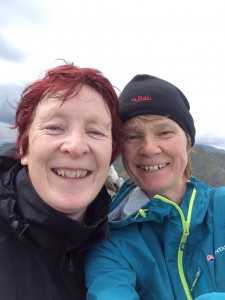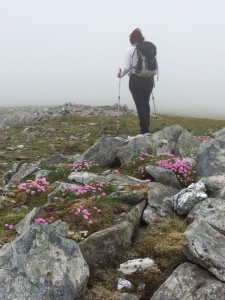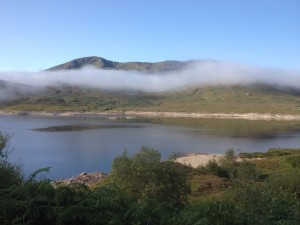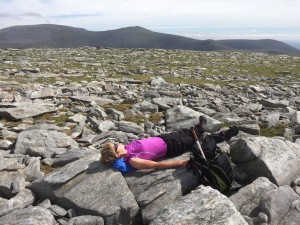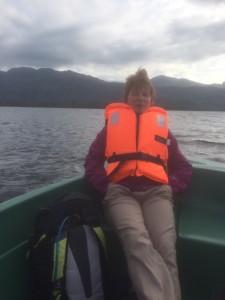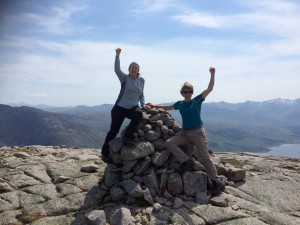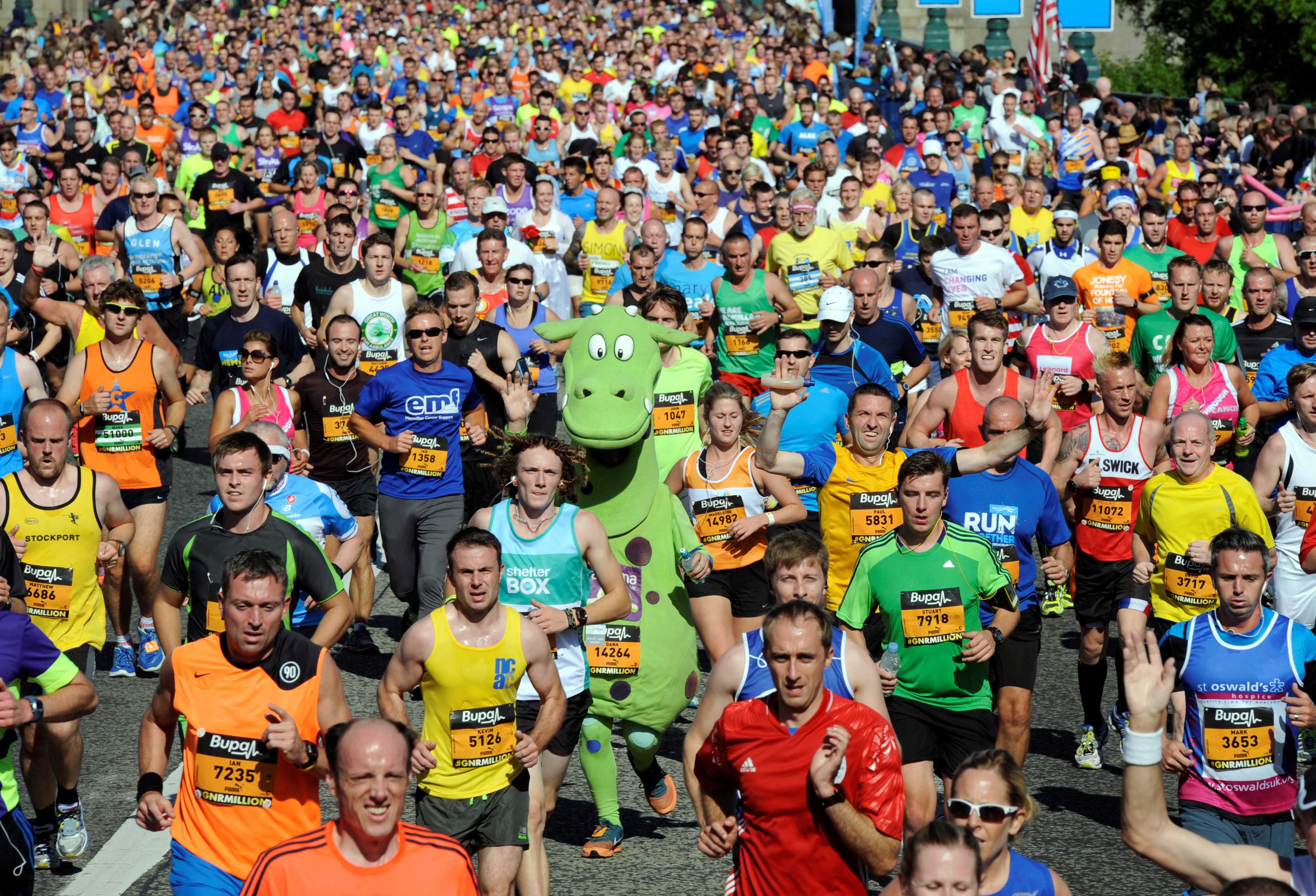Patients Carol and Vera take on the Munros and Corbetts Challenges – Part 1
The Munros challenge, also known as Munro Bagging, is to conquer all of Scotland’s Munros, mountains named after Sir Hugh T Munro who surveyed and classified the mountains in 1891. To be named a Munro, the mountain must measure over 3,000 feet. The Highest Munro is Ben Nevis, measuring 4,411 feet. There are 282 Munros in total and around 6,000 people have achieved the status of ‘Compleatist or Munroist’ by climbing them all.
The Corbetts are also Scottish mountains, though not quite as high as a Munro. To be classified as a Corbett, the mountain must be between 2,500 and 3,000 feet high and have a descent of at least 500 feet on all sides. There are 222 Corbetts in total.
Carol English and Vera Wealleans are long term visitors to Newcastle Sports Injury Clinic, having been seeking treatments for a variety of injuries over the past 20 years. Whilst both Carol and Vera take part in a lot of sporting activities, it is their walking challenges that more often than not bring them into the clinic. Having been friends for many, many years Carol and Vera decided to take on the Munros and Corbetts challenges to indulge their passion for walking and hill climbing.
Carol and Vera decided to take on the Munros and Corbetts challenges and over the past 20 years they have spent many hours, days and weeks in Scotland to fulfil their dream of completing the challenge.
Will Carol and Vera be able to add Compleatist/Munroist to their list of life achievements or will the Scottish mountains prove to be a climb to high?
In this 2-part blog series Carol and Vera share the highs and lows of Scotland’s highest mountains.
What inspired you both to take on the Munro and Corbetts challenge?
Vera: Our partners both have their own activities which sometimes take them away from home and we wanted to have an activity that we could get our teeth into and give us the opportunity to have trips away.
Carol: We started with walks in the Lake District and then a friend of mine mentioned the Munros challenge so after talking it through with Vera, we decided that this would be something that would be mentally challenging and test our endurance, while giving us some time away from our hectic family lives.
Vera: I was more than happy to take on the challenge.
How did you prepare for the first Munro climb?
Both: *laughing* We didn’t, we didn’t even have a map!
Vera: We arrived at Glen Coe and had to ask for directions.
Carol: While we didn’t exactly prepare for the climb, we had walked in the Lake District so naively we thoughts the Munros would be similar. Though we did pack some sandwiches.
Did you require any special equipment, clothing etc, did you seek assistance from a podiatrist when buying your walking boots?
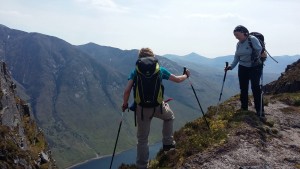
As the challenge progressed, Carol and Vera had to introduce more specialist equipment to their kit bags.
Both: Having completed some walks in the Lake District, we did have some comfy walking boots and a very basic walking kit.
Carol: Over the years we have learned what to expect for most Munros and Corbetts. As our own physical needs changed we have both picked up some more efficient equipment such as walking poles.
Vera: It’s worth noting that we didn’t have GPS when we first started the Munros and Corbetts challenges over 20 years ago, so we now use that to keep us on course – though that’s not 100% so we still make sure we carry a map – in a plastic bag to avoid water damage not only from the elements but also from river jumping! – more on that later.
Do you remember the first Munro that you climbed?
Carol: As satellite technology has improved, ordinance survey has resurveyed the heights of the Munros and the first Munro we ever climbed has since been demoted and is no longer classified as a Munro.
Over the past 20 years you have both completed a lot Munros and Corbetts, that is quite an achievement, what were the best and worst hill climbs that you have completed?
Carol: Vera and I were chatting about this a few weeks back and over the years we have climbed over 280 Munros and 222 Corbetts, it is so difficult to narrow it down to best and worst.
Vera: We found that we can’t group all the walks/climbs we have done together, we decided that it would be better to split into categories – best view, easiest climb, hardest climb etc.
Both: Many people expect us to say Ben Nevis when asked what our best climb was, quite honestly, we wouldn’t even put it in our top 10 of climbs.
Carol: As we are struggling to name a favourite, I would say the best climbs we have done have been the remote hills as their views are the best. A’Mhaighdean was particularly beautiful.
Vera: The worst Munros were the ones that we had to abandon due to high winds or severe downpours of rain. The Fannichs were particularly challenging, one of which we ended up walking an extra 5 miles in poor weather conditions as we took a wrong turn – never rely on GPS.
What was your most memorable moment over the years when taking on the challenge?
Carol: When we were climbing the Beinn Alligin Horns, we were faced with a 6 foot descent down a completely flat surface, the rain was drizzling making the rock face quite slippy, Vera made it down the descent easily but when I followed her down I got a bit tangled and I fell, landing on my rucksack sliding further and further down the wet slope, Vera was helpless to stop my descent but thankfully I came to a stop before getting into any further trouble.
Vera: When we are on a climb we quite often face a river crossing, this is not my favourite part of a climb, on one occasion we were faced with a river just a little too wide to take a run and jump at. I decided to walk a little further up the river to see if there was a more suitable place to cross. Carol on the other hand, decided the best course of action would be to jump onto a mossy stone in the middle of the river to bridge the gap and help her get across to the other side. The moss was rather slippy and Carol didn’t quite make it on to the rock. I heard the splash and turned around to see Carol treading in the rather deep river – our only map floating past her, always keep your map in a ziplock bag! Carol had to swim down the river to catch the map, so we could continue the journey.
How does it feel when you reach the summit of a Corbett or Munro?
Carol: Sometimes we just need to have a lay down using our rucksack when we reach the summit, other times we have a little celebration.
Vera: It is always a moment of celebration, especially when it is a Munro that has been a bit of a thorn in our sides. Ben Aden, for example, being a remote mountain is logistically difficult get to never mind climb. We had to hire a boat which because of the unpredictable Scottish weather was a nightmare to organise. It was definitely a defining moment when we reached the summit, I punched the air in delight!
Carol: Reaching the top of Ben Aden was the Munro that we realised we would be able to complete the challenge, it really was a special moment!
This week Carol and Vera shared many of the high points of the Munros and Corbetts challenge, in the next blog they talk about some of the lows, will they be able to complete the challenge without another unscheduled swim in the river, will the weather hinder their chances of completing the challenge or will injuries take their toll on the ladies?

